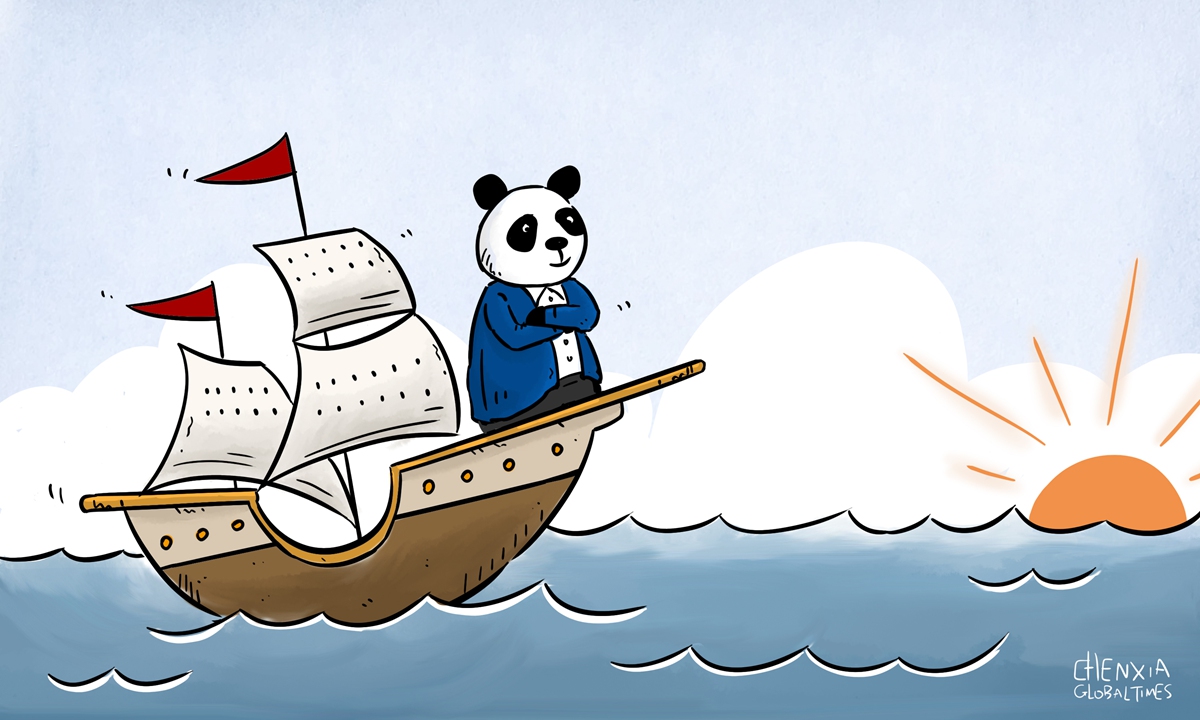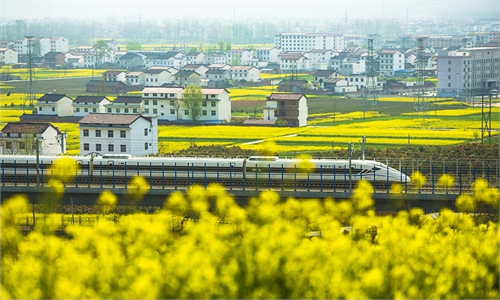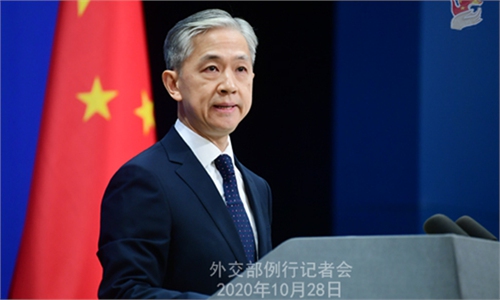COMMENTS / EXPERT ASSESSMENT
China’s industrial self-reliance will bring new opportunities for Asia-Pacific economies

Illustration: Chen Xia/GT
A report conducted by Euler Hermes, a credit insurance company under Allianz, claimed that China's "dual circulation" development strategy will undermine trade partners' interests, according to Reuters.By comparing the innovation potential and technology level of a number of economies by counting the number of their patent applications, the report concluded that as China seeks to build a self-developed, controllable, safe and reliable industrial and supply chain, economies including Malaysia, Singapore, Thailand and Chile will face losses.
However, such concerns stem from a misinterpretation of China's "dual circulation." The strategy will not undermine any trade partners' interests. Instead, it will provide major opportunities for them.
The "dual circulation" strategy aims to build up an open and inclusive system in which internal and external markets boost and support each other.
While economic and technological self-reliance will be a priority, given the unprecedented external pressure in many areas, China will unwaveringly continue opening to the world. The world's second-largest economy will not abandon its opening-up policies and will continue to pursue global cooperation in key areas.
In future development, investment and trade will remain key aspects of China's economy. After the COVID-19 pandemic, global manufacturing, including technology, talent and capital will continue to move to the east.
Now is the best time for China to strengthen its cooperation with Asia-Pacific economies, and to sign the Regional Comprehensive Economic Partnership (RCEP).
In terms of trade, China has a large market that not only includes 400 million people in urban areas, but also a significant number of consumers in rural areas. Therefore, imports are expected to see strong growth.
China's production chain will extend to more economies including Malaysia, Singapore, Thailand and Cambodia as well as Japan. China's industries need up- and down-stream supply chains in the Association of Southeast Asian Nations (ASEAN) economies. When the powerful chain has been built up, it will contribute to global industry.
The economies of China, Singapore, Malaysia and other countries are highly complementary. In the new process of global industrial upgrading, the more China develops, the greater China's demand for various products from Malaysia, Thailand, Vietnam and other countries will be.
The third China International Import Expo (CIIE), which opened on Wednesday, shows that China needs products from these economies, including low-cost and advanced products. The products that are produced by China will also be made globally, rather than solely "Made in China."
The report also said that compared to products from Malaysia, Singapore and Thailand, products from the US, Germany and Japan, which have more advanced technologies, will see less risk of being replaced in the process of China's industrial self-reliance.
China's "dual circulation" strategy will focus on boosting domestic innovation to become self-reliant in core technologies, but such industrial adjustments are necessary due to the US chip supply ban and other measures in key technological areas. The aim of the strategy is to improve self-reliance to prevent a rupture of the industrial chain.
It's not countries like Malaysia and Singapore that have imposed a crackdown on China. Instead, these economies enjoy trade growth and strengthening cooperation with China. When China is realizing industrial self-reliance, it's not these countries that will face losses. It's countries like the US that should be more concerned.
The author is a former Chinese vice minister of commerce and executive deputy director of the China Center for International Economic Exchanges. bizopinion@globaltimes.com.cn



